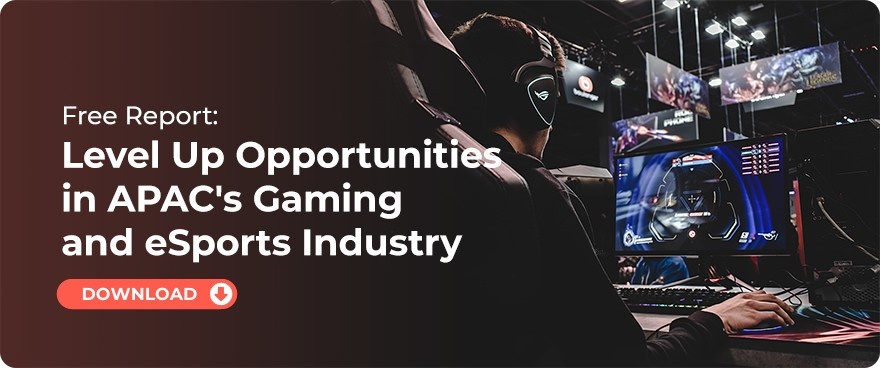Non-endemic Brands Are Revolutionizing Their Strategies by Pivoting to Health and Wellness
Health and wellness branding is one of, if not the most strategic way for non-endemic brands to dip their toes into this $4.5 trillion wellness industry.
A direct response to the Covid-19 pandemic in 2020 has shifted consumer priorities for the better, with more consumers adopting a healthier lifestyle–whether it starts from healthy, clean eating, exercising regularly, or simply improving their mental state.
An Ogilvy Wellness Gap study which surveyed 7,000 consumers globally across 14 countries, found that a significant 77% of respondents prioritized wellness in 2020. Many of whom (80%) were identified to demand more opportunities to improve their wellness. However, there is a clear oversight by brands to close this gap as more than half of these people surveyed (54%) feel that brands are not taking their need for wellness seriously. More aptly, search behavior has shown that consumers are moving away from the learning phase to one of action – highlighting key opportunities for brands to capture their attention.
With such a strong impetus for brand growth hiding in plain sight, even non-endemic brands are capitalizing on this bandwagon as health and wellness become increasingly mainstream and accessible to all. It is no coincidence that millennial customers, who appear as the core group heavily active in wellness, are leading this healthy movement with more flexibility when it comes to income, time, and lifestyle.
It is therefore important for brands to appeal to consumers by integrating more health and wellness services into their existing offerings. The experience economy is critical in this digital era as we notice the buying power shifting to consumers.
Ecommerce brands, like Shopee, are a prime example that has gained considerable relevance in APAC when it comes to targeting consumers strategically, especially through organized sales campaigns in the wake of the healthy living crowd. Associating with wellness allows your brand to drive home a more resonant value that matters more to your consumers — while reducing the friction in their purchasing journey — especially when considering your brand as the “go-to” solution for their health and wellness needs.
When it comes to having your ears on the ground, insights analysts and digital marketers can eliminate guesswork by acquiring a social intelligence tool like Digimind Social to provide an in-depth look at what your customers are talking about pertaining to your brand, market, and even competitors.
1. The Emergence of Health and Wellness Tech 📱
Technology has come to the fore in light of this pandemic, with more brands either adapting to newer technologies to market or creating new technology altogether to pile on existing marketing offerings. Brands in the scope of the latter, are popping up right, left, and center.
This pandemic is a heyday for most app developers looking to burst into the scene, with the need for more wellness solutions further amplifying this shift in consumer behavior. In the United States alone, venture capital funding of mental health startups in the US totaled US$1.37 billion through the third quarter of 2020, outpacing the amount invested by US$0.31 billion the year before.
Prospective customers are willing to spare no expense to acquire these services in 2021, especially with the pressure of having a sustainable work-life balance. Smartphone apps give users the freedom to remotely access a wide array of health and wellness fixes that are attuned to their needs. Holmusk, a Singapore-based data science and health technology firm that recently went through a successful US$21.5 million Series A funding last year – in addition to their existing product that serves those clinically diagnosed with major depressive disorder, will soon launch a new app in April called mHaven, designed for the wider, non-clinical audience.
In an age where emotional getaways and personal counseling are more critical than ever, Holmusk, and even more commonly known apps like Calm and Balance are switching up what it means to seek restoration in the confines of our homes.
2. Redesigning the Approach to Fashion 👗
Fashion retailers were hit hard by the ensuing number of lockdown restrictions throughout 2020, resulting in less footfall at physical outlets. In addition, the stay-at-home lifestyle has not helped brands who struggled without an online presence either.
As a result of more people preferring to stay home than to go outside, people were dressing more appropriately to fit the current theme: comfort over style. While this is by no means a fashion statement to overhaul your wardrobe, I must highlight how new shopping habits have surfaced during this pandemic.
Vogue coined the term “comfort consumerism” as the new wave of consumers indulging in products that are built with comfort in mind. Comfort has been defined synonymously as being healthy, where it aids aspects of a person’s emotional wellbeing. Now with work-from-home becoming the new norm, people have a stronger preference to choose an outfit that fits the occasion without sacrificing comfort; to establish professionalism that veers towards comfort when appearing in a virtual call.
3. Esports Winning Healthy #FTW 🎮
Esports athletes, while they do need to be in a sedentary position when playing, often do not receive the same reception as their traditional counterparts would. However, for obvious reasons, it would be near impossible to rescue a point if I were to compare the calories lost for a single match between one from the other.
Instead, esports requires a different kind of intensity even when not at peak performance. Professionals are known to clock in an average of 5 hours of playing time daily. Training that one, if not careful, could harm a player’s psychological wellbeing, or worse, lead to physical, chronic injuries.
Hence, esports organizations like the Global Esports Federation (GEF) are now delivering more awareness on promoting esports wellness. It is worth noting that esports athletes hone their game from the bottom up, and as such, those who find success have no short of respect when it comes to their level of commitment.
Brands are developing healthy foods such as supplements and health gels to sustain esports players when their games do run long. The recognition on the wellness agenda is clear for game publishers like Riot Games, who collaborated with Crisis Text Line, a non-profit organization to assist players facing mental health issues. In addition, gaming chairs are all the rage for both gamers and non-gamers alike, with their ergonomic benefits an obvious investment when upgrading the current home office environment.
Think Like How Your Customers Would 💭
Brands and agencies that are looking to impart new growth strategies for this new business year can develop health and wellness branding as one of the ways to align themselves to their customer’s needs. It has become clear that values, such as authenticity, connection, and personal space can be further broken down to research granular behaviors often missed by your competitors and to spark a niche product.
Emotional Wellbeing has risen as a top priority for consumers amid Covid-19.
Social listening tools, like Digimind Social, allows you to approach strategy making in a way that puts your consumers first in the line of innovation and optimization. It’s not enough to simply innovate according to what’s already available in the market. To thrive, brands need to reach further into the recesses of their customer’s pain points and engage them where they are most comfortable.
Written by Jared Silitonga
Jared is a member of the APAC marketing team at Digimind. Besides hashing insights into content, he loves a good ol' sit-down of board gaming and film rhetoric. Catch him diving in other shenanigans on Instagram @jarrds


